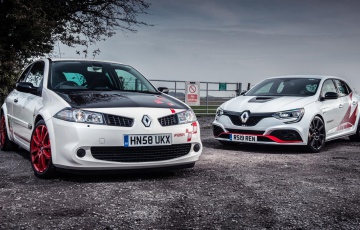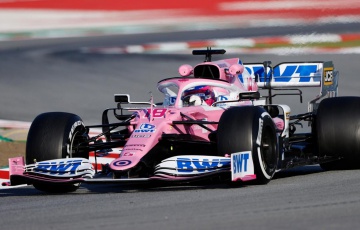9 things you need to know about the Renault Clio V6
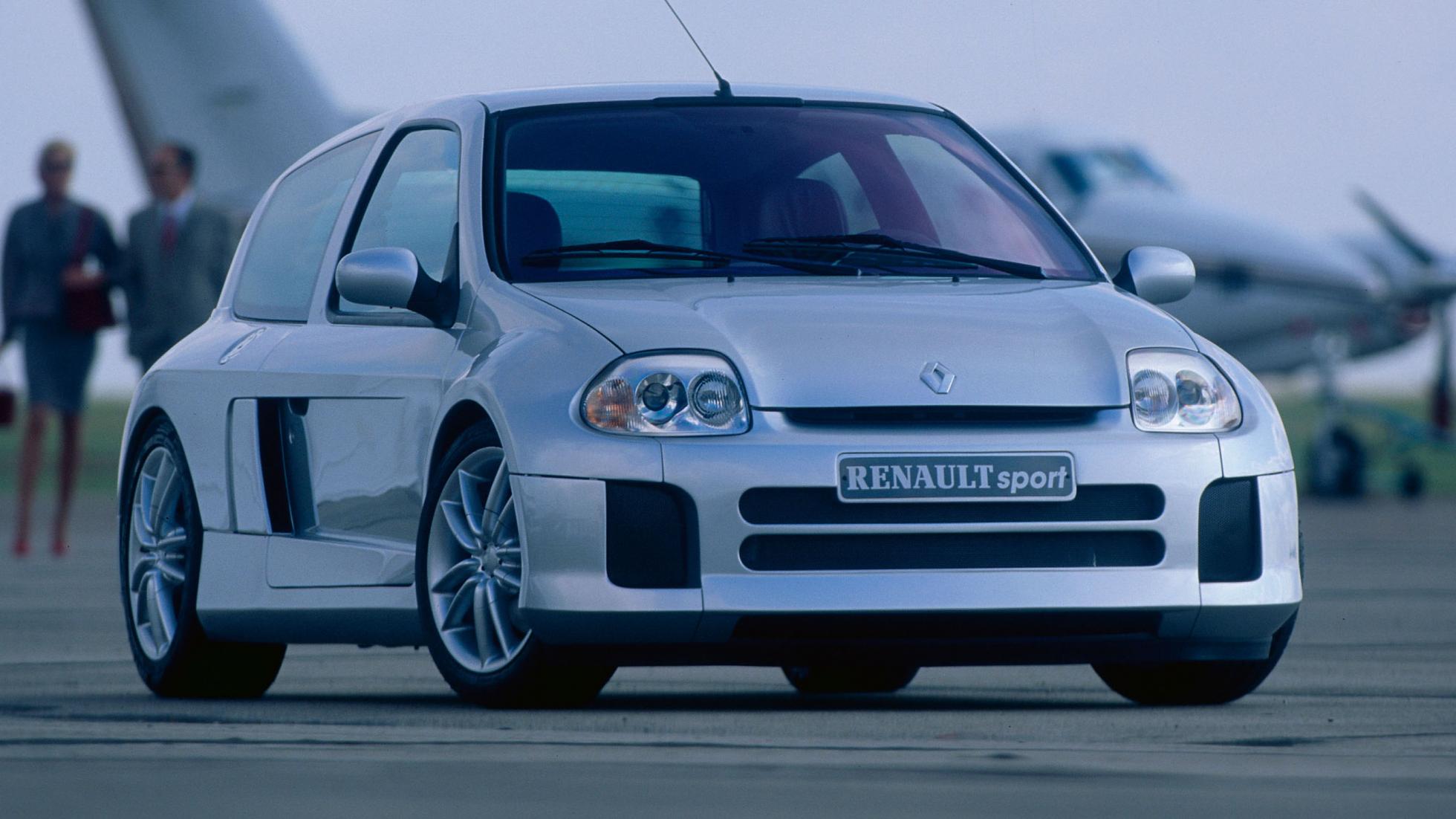
Tom Walkinshaw Racing helped bring the road car to life
At 1998’s Paris Motor Show, Renault unveiled an updated Twingo, the Vel Satis concept and the ‘Clio Renault Sport V6 24V’.
We’re assured that the response to that last car was so great, Renault ‘swiftly’ ordered a development and production study from none other than TWR (Tom Walkinshaw Racing).
And in turn, TWR said that the project – sticking a massive V6 in the middle of a wee hatch – was entirely feasible. TWR may or possibly may not have also said it was an entirely excellent idea.
Step forward to the year 2000, and the mad little Clio was born. Look, here it is in front of a plane. Grrr.
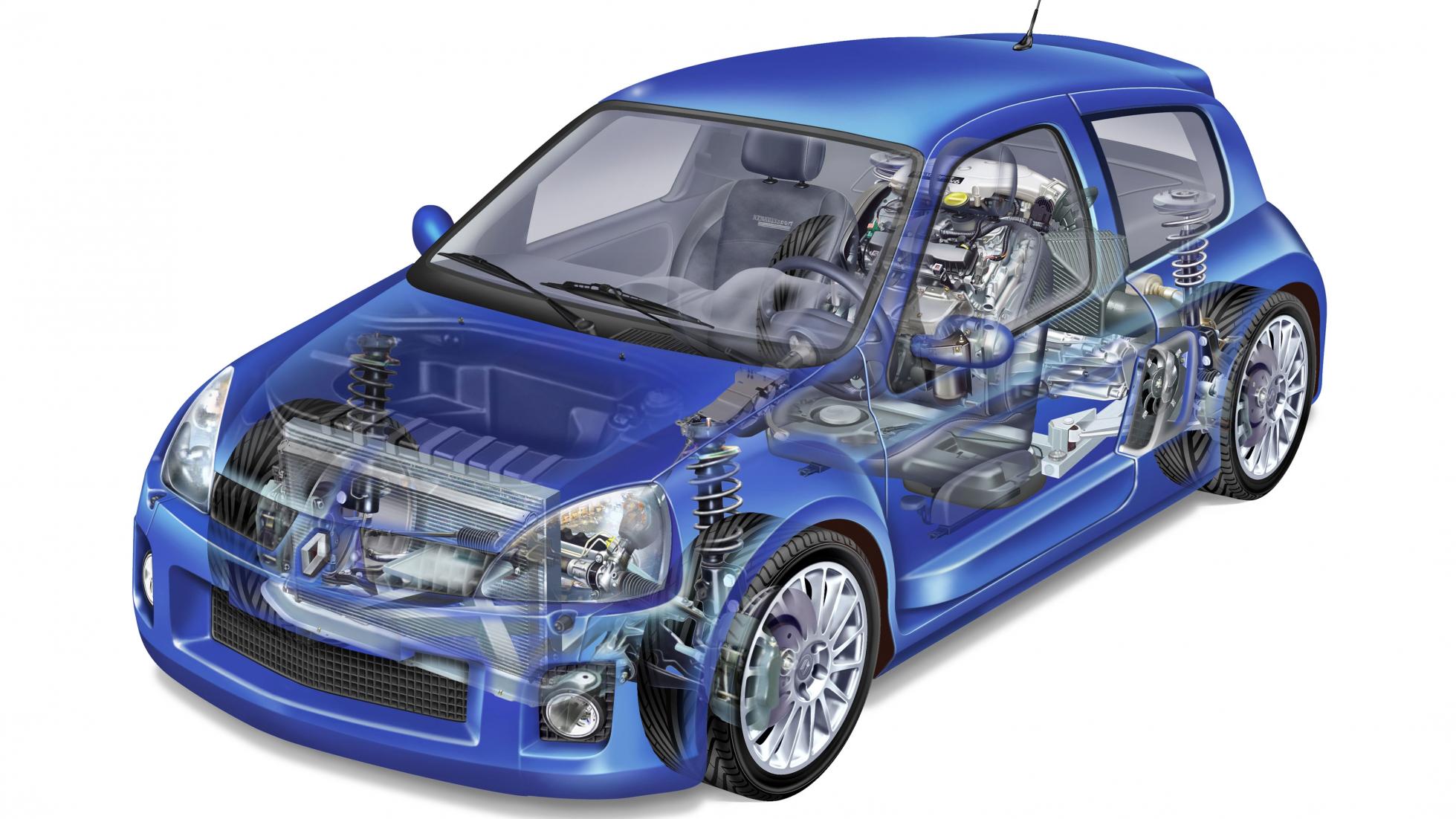
It used the engine from a Renault Laguna
Though the idea of the mid-engined Clio V6 was borne out of the Clio V6 Trophy Series – itself created to promote the then second-gen hatch – the road-going car used an engine derived from… a Laguna.
However, it was treated to lots of fun new stuff, like pistons, a higher compression ratio, bigger inlet ports and a higher rev limit. See? Fun.
The V6 kicked out 230hp and helped the Clio sprint from 0-100km/h in 6.4secs. At the time, this was really quick. Top speed? 237km/h.
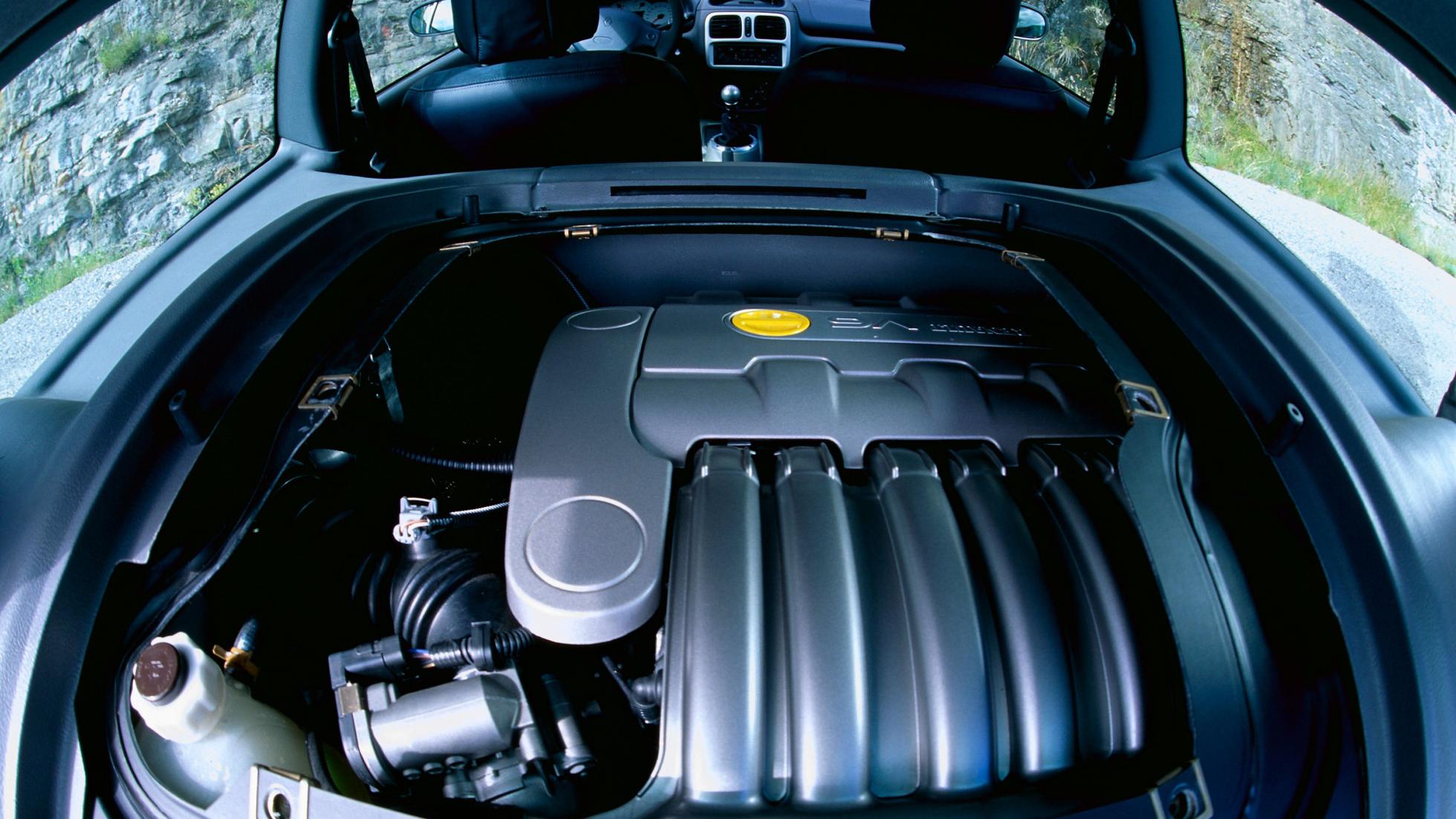
Said engine was stuck IN THE MIDDLE
Fairly obvious, what with it being a mid-engined Clio. The naturally- spirated 3.0-litre V6 sat inside an entirely bespoke rear structure, just behind the driver and passenger. Power was sent to the rear wheels via a six-speed manual gearbox, itself developed from a five-speeder.
A limited slip differential was applied, and while “there was no sudden turbocharger rush to catch out the unwary”, we’re told the “short wheelbase and a lack of traction control ensured the Clio V6 delivered an incredibly exciting and highly involved drive”. Read: lairy as heck.
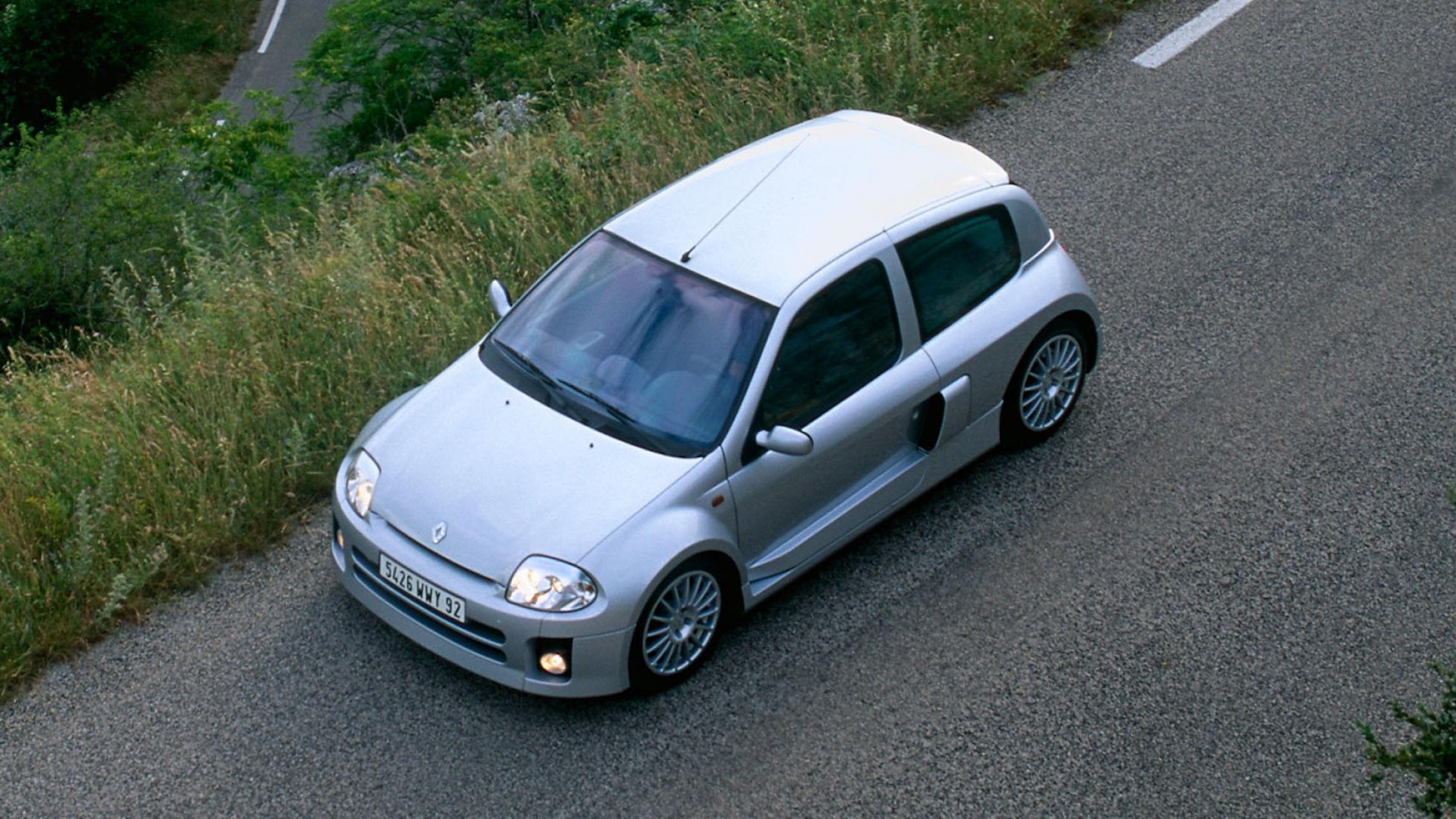
It was wide. Very, very wide
The front subframe was based on the Clio 172, though here it got a strengthening cross member. Suspension was all new – as was that rear structure – comprising a MacPherson front and multi-link rear. The anti-roll bar was taken straight out of a Clio Trophy car.
Fat, too. The Clio V6 was 171mm wider than a regular Clio, and its tracks were 110mm wider up front and 138mm at the back. It used staggered wheels and tyres, too, the rears fatter than the fronts. It was also lower and a wee bit longer than normal.
None of which is surprising, given how mighty the thing looks.
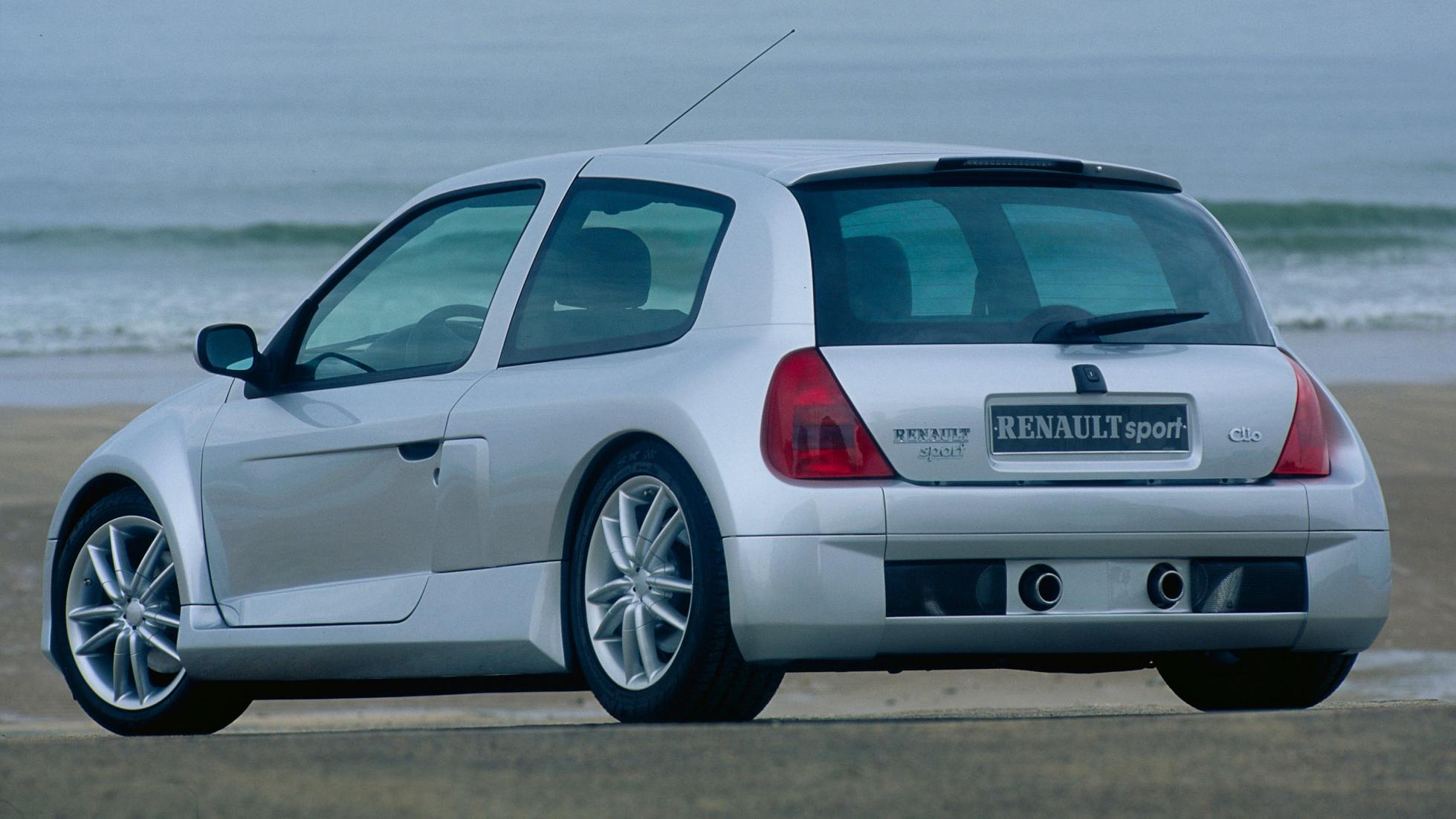
Each car was hand built
TWR built each and every one of the first ‘Phase 1’ Clio V6s in Sweden, knocking out 12 cars a day.
True, each car didn’t really benefit from what you’d call ‘storage’ bar a 67-litre compartment under the bonnet. But they did have such wondrous things like: a six-CD changer! ABS! Air conditioning!
In total, 1,631 of those TWR Phase 1 cars were built, and just 256 came to the UK. Rarer than… things that are popular, then.
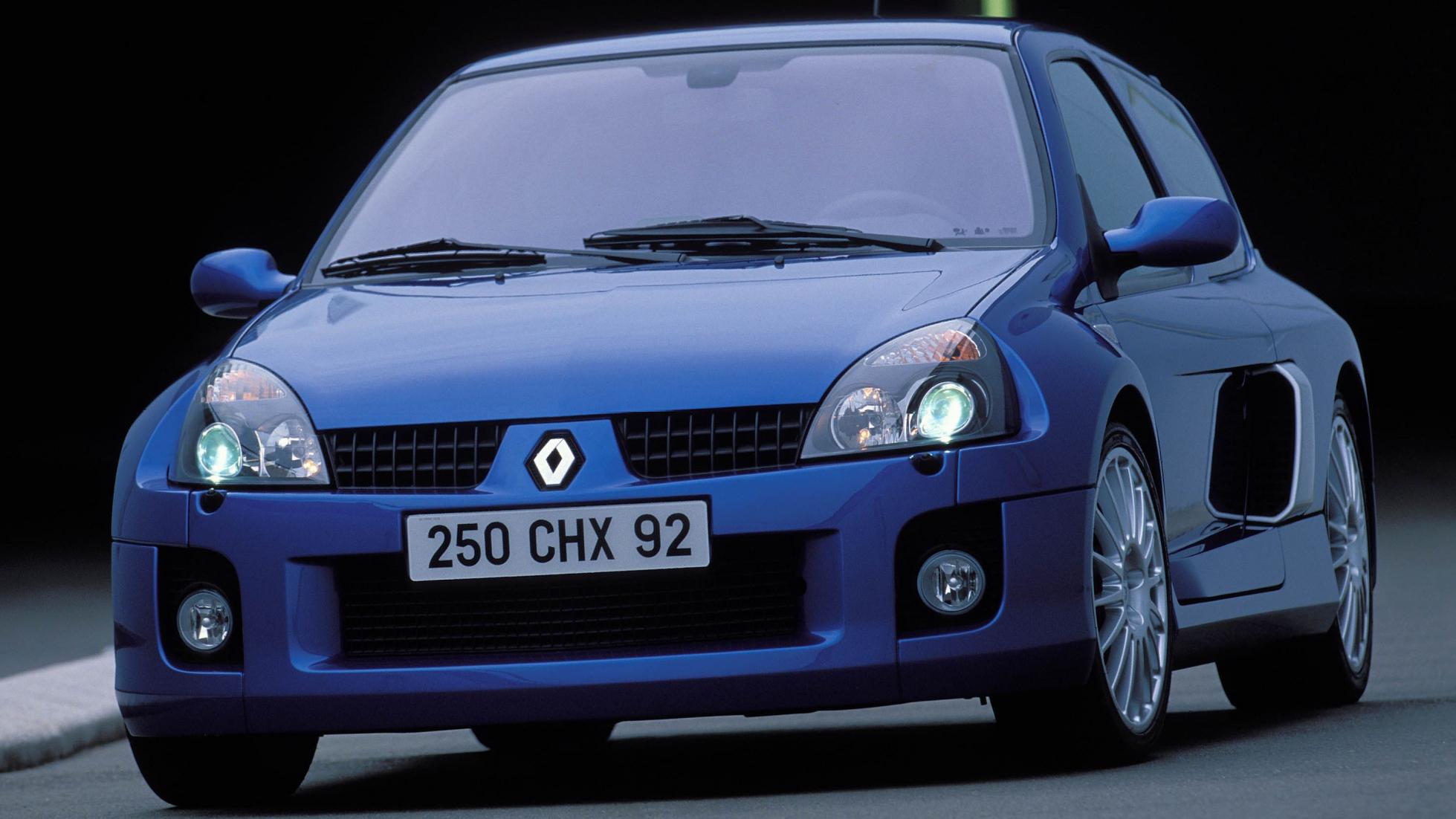
The Phase 2 cars came with more power
When it came to facelift time for the regular crackers Clio, the full nutcracker V6 got a nice little boost up to 255hp. This came courtesy of reworked cylinder heads and a freer-flowing induction system, and together with a shorter final drive and closer gear ratios, 0-100km/h was massively quicker – just 5.8secs.
Remember when 255hp and 5.8secs to 100km/h was stupendously powerful and stupendously fast? Simpler times.
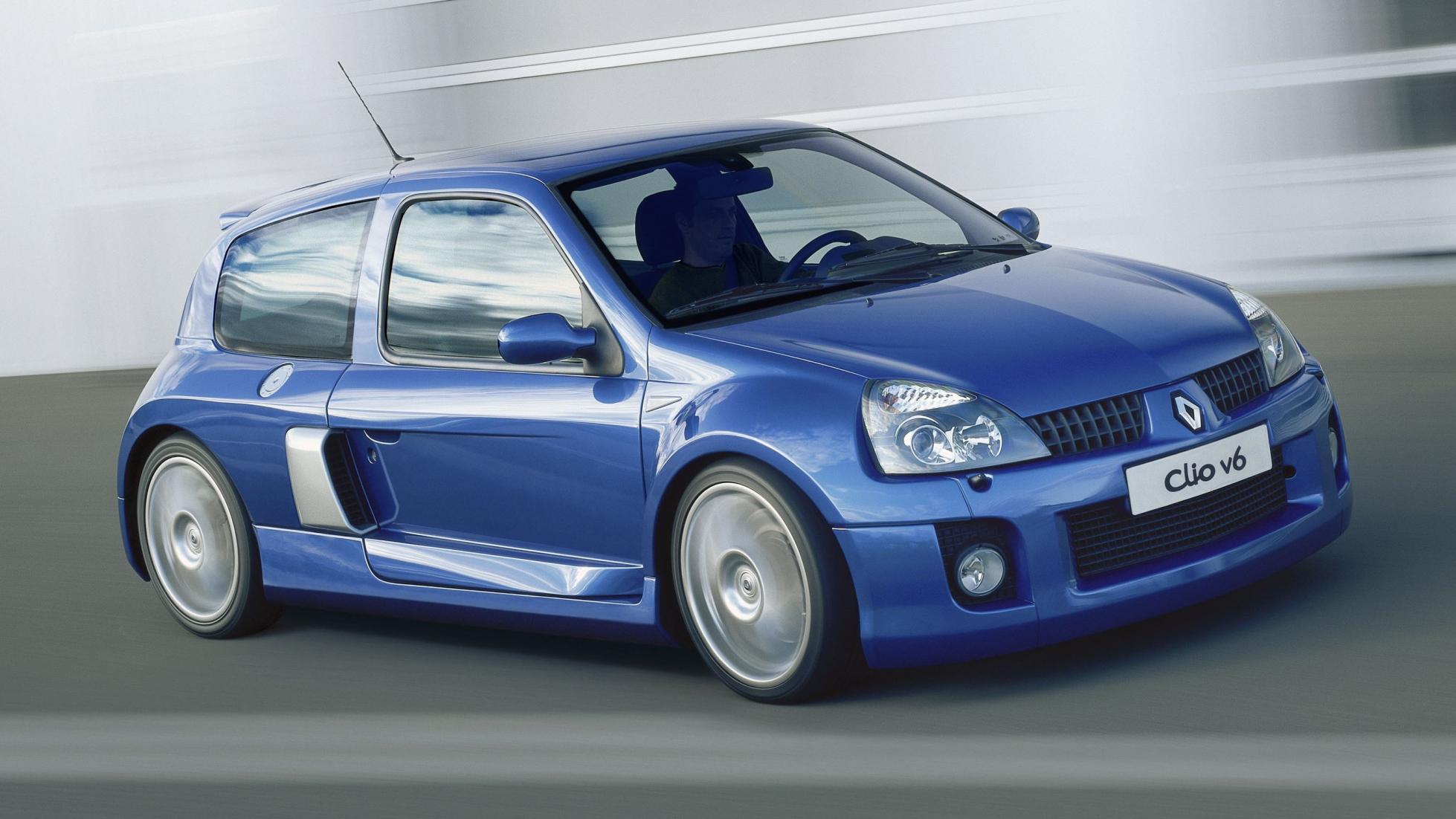
The Clio V6 255 had suspension upgrades too
The wheelbase was longer than the first-gen car, and the front track got wider still. The suspension and subframes were stiffer, and it featured new bump stops and longer trailing arms too. Renault claims it was “considerably more civilised than the earlier version”.
We’re inclined to agree. While the second-gen car’s still wild, it’s a tad less scary.
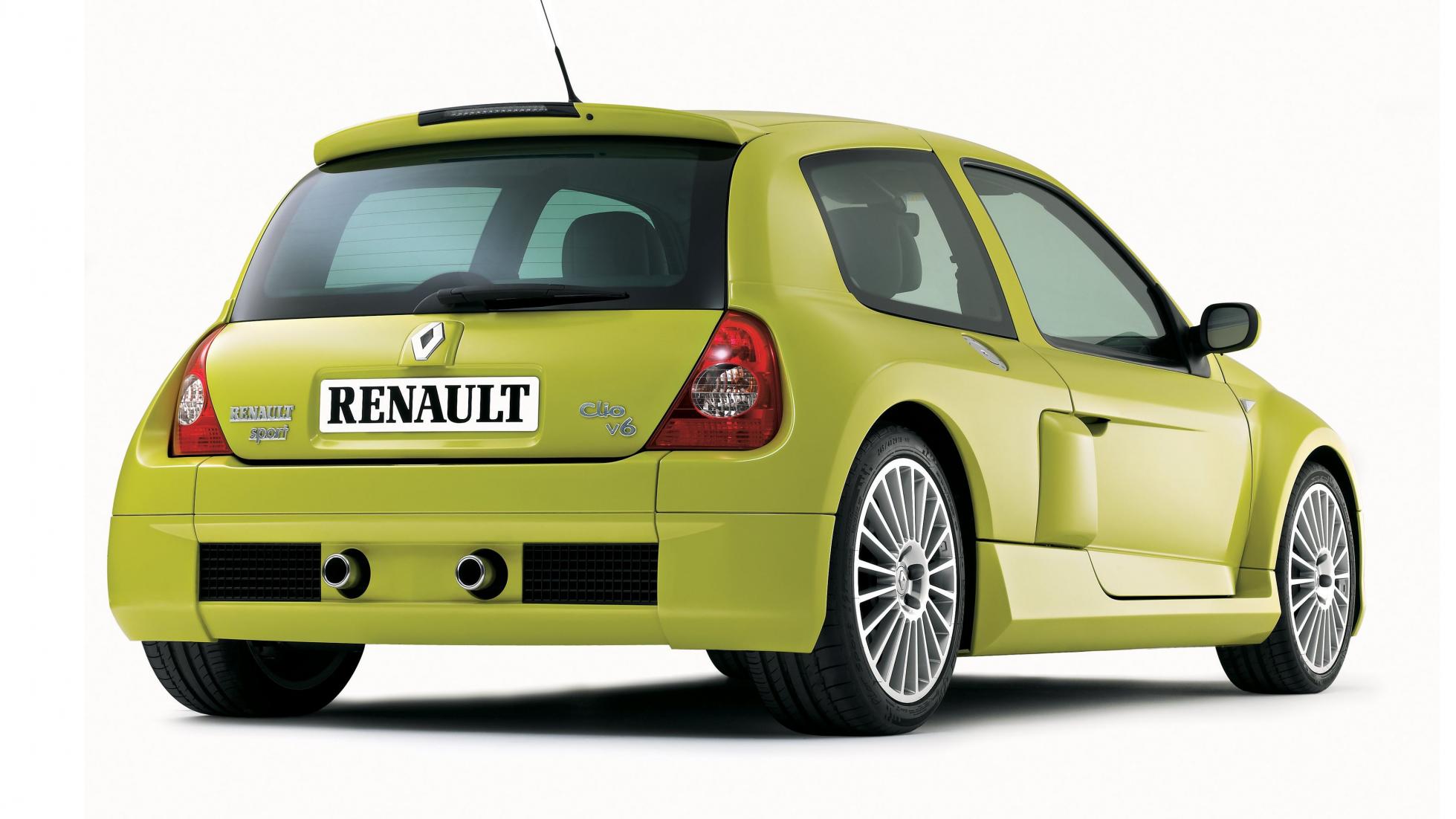
The 255 also boasted some excellent yellows
Very Important Point, this. Along with the regular facelift bingo – new front and rear lights, bigger wheels, new intakes etc – the Clio V6 255 also came with the optional ‘Liquid Yellow’ paint that’s now become a RenaultSport staple. Weirdly, just 18 right-hand drive Clio V6s were optioned with this particularly lurid shade, which makes it a) a shame more people didn’t spec it, and b) rare.
Here, we’re actually looking at an Acid Yellow Clio V6, which is even rarer, a mere eight of which came to the UK.
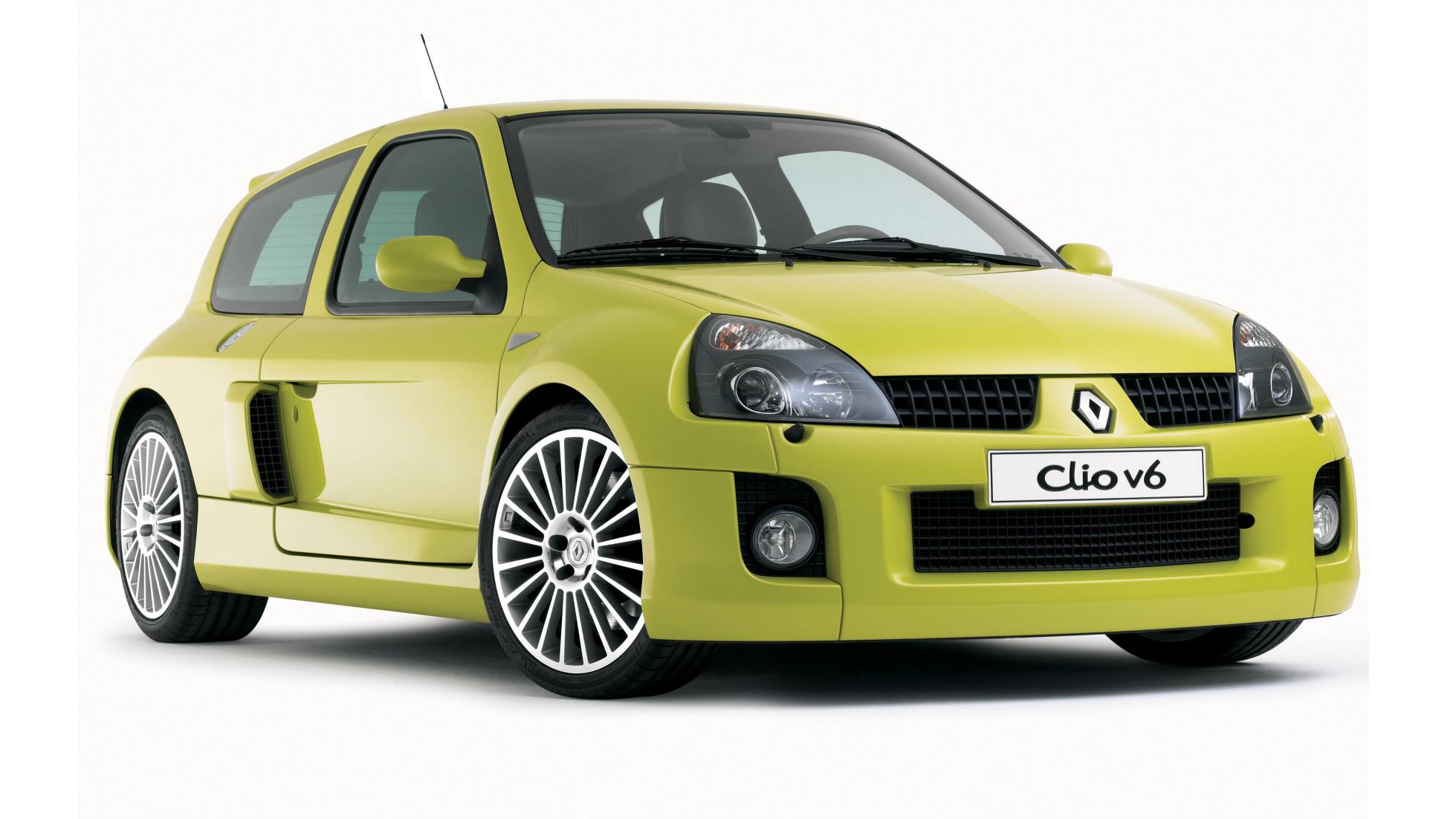
Renault built the second-gen cars
The 255s were all built at Renault’s ex-Alpine Dieppe factory (and now an Alpine factory again), still by hand, with 1,309 made when production finished in 2005. Of those, just 354 came to the UK.
Can you believe that when the original V6 was introduced, it cost just £25,995? Madness.
If you’re anything like us, you’ve no doubt given up on the rest of your working day and are using a search engine of your choice to look up ‘Renault Clio V6 for sale’.
STORY Vijay Pattni






